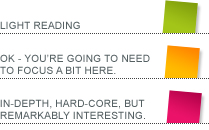This post is about whether or not you should worry that your site works on iPhone and iPad, especially if the market for your site is mostly South African.
Every now and then, we get a request that a website should work on iPhone as well as on desktop computers. We generally advise against spending money or time on this – especially in the first phase of the project – and we’ve recently completed some research to support this take on things.
There are 2 factors that we need to look at: Designing for iPhone, and the potential market for your website on iPhone.
2 Points to note: We’re not talking about developing an iPhone app – just making your site look great on iPhone; and we’re not talking about international websites – only websites that are aimed at South Africans.
Designing for iPhone
This is the easy part. The advent of updated CSS standards has meant that planning, designing and developing a website for multiple media and sizes – from a large-screen monitor displaying 1920 pixels wide, to an iPhone3, displaying 480 pixels – is easy and clean. It’s called “responsive design”. It will take a bit more planning, a bit more time designing the layout scheme, and a bit more time expanding the CSS. The upshot is that it will add a bit more to your budget, but it can certainly be done.
The Market for your site on iPhone
First, let’s look at bulk figures: This article on MyBroadband.co.za puts the number of iPhones in SA at 100,000 in August 2010. This was just before the release of the iPhone 4 in SA, and before MTN started selling them. This figure seems accurate, and it’s a pretty small gross market, even if we allow for it to have tripled over the past year.
But bulk figures don’t really matter too much. What we need to know is not how many people own iPhones , but how many people will choose to visit your website on iPhone rather than on their computer. Here are some real-world examples from traffic stats from 3 websites:
Example 1: A high-profile South African brand in a competitive industry gets around 10,000 visitors to its site every month. These visitors are from a broad range of South Africans. Around 2% – 200 visitors – each month are on iPhone or iPad. A further 100 are on BlackBerry.
Example 2: A specialised, creative, high-end service provider, whose clients are mid-30’s and affluent, gets around 2,500 visits to his site each month. As expected, his market have iPhones. Around 6% of visits – 130 people – are on iPhone or iPad. A further 15 or so come via BlackBerry.
Example 3: An industry membership association website gets about 5,000 visits per month. The visitors are generally associated with a specific industry and are not traditionally tech-savvy. Less than 1% of those visits – around 40 people – are from iPad and iPhone. 60 people come via BlackBerry.
Recommendations
Overall, we recommend that the market is too small, and that, even with the right potential visitors, people tend to visit the web on computers, not on smart phones. Currently, and given that it will certainly add some to a probably already tight budget, you shouldn’t worry about making your site work on iPhone or iPad. Maybe in a year’s time this will change, but for now, focus on building a solid website designed to achieve its purpose.



